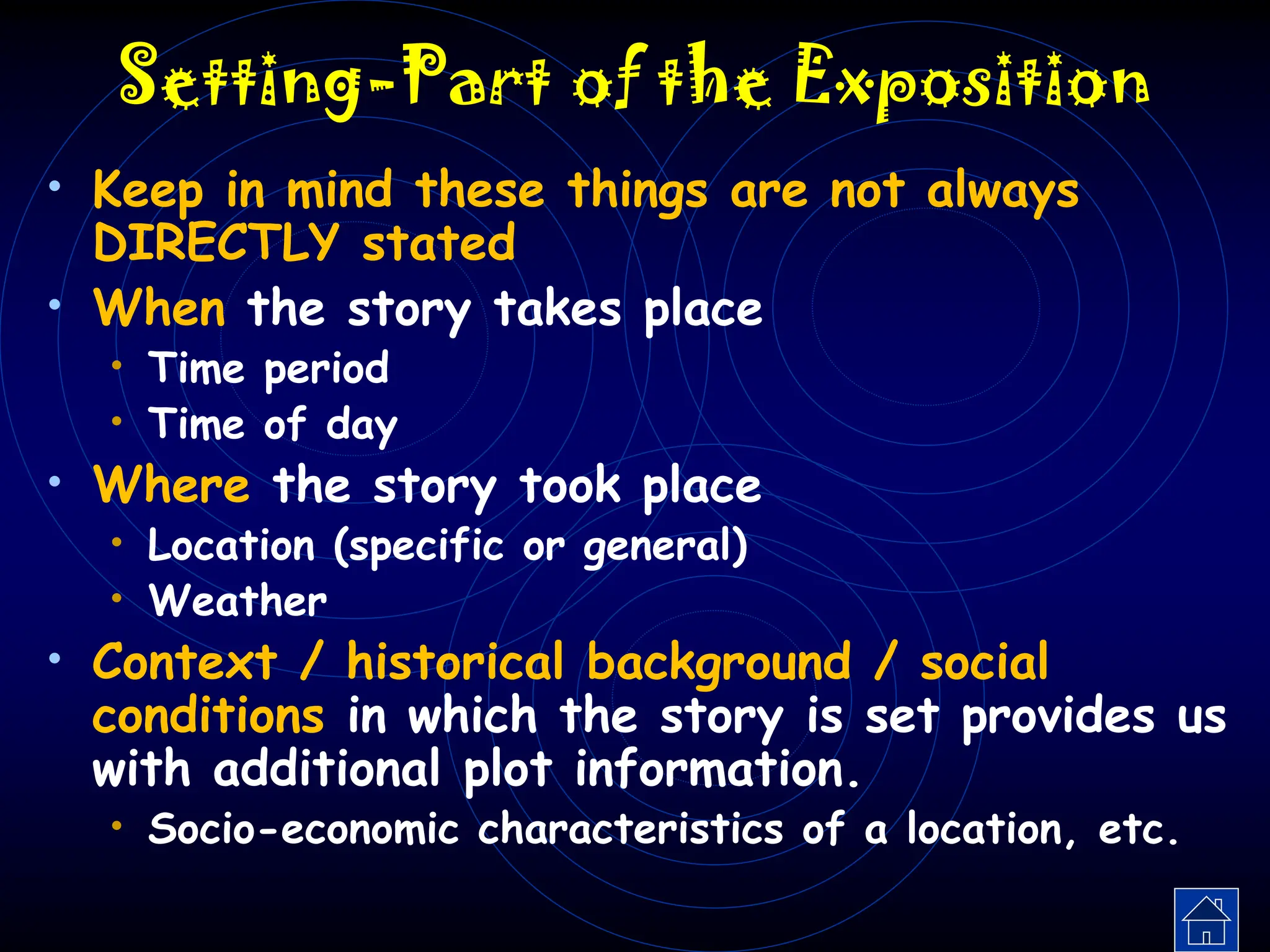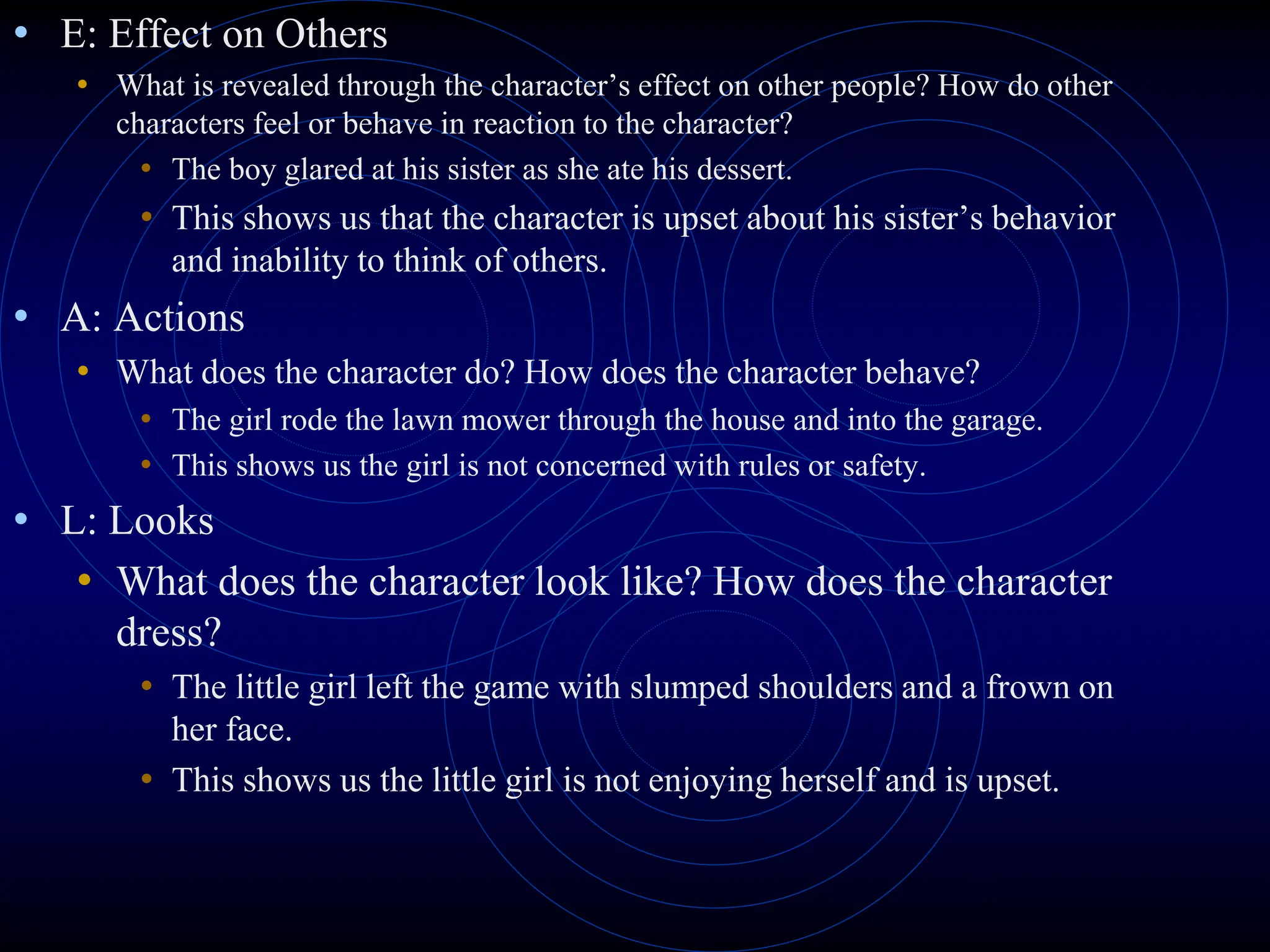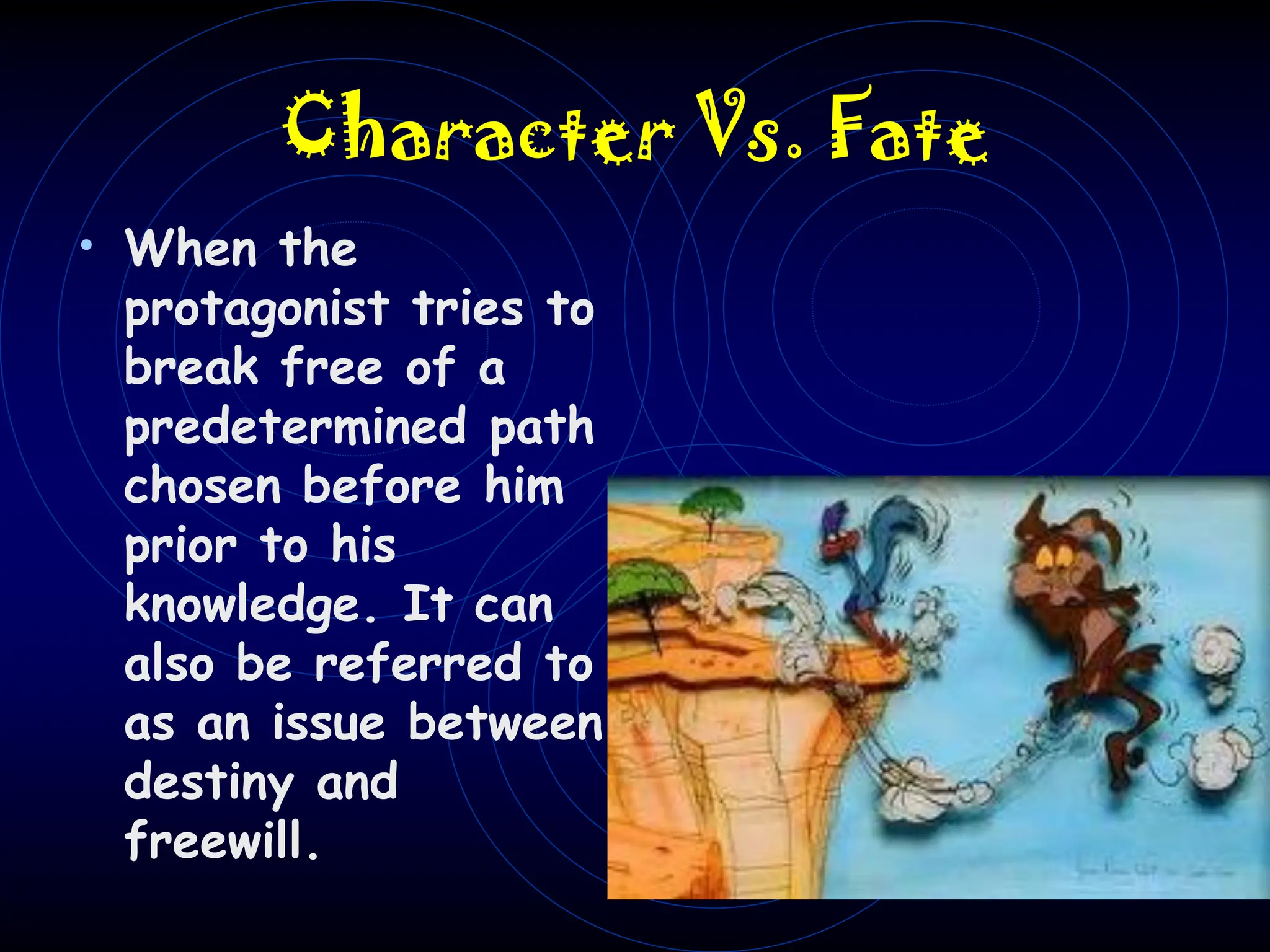This document discusses the elements of fiction, including types such as novels, short stories, and novellas, emphasizing the importance of plot, setting, theme, and characterization. It outlines methods for identifying themes, the role of symbolism, and various character types along with their development. Additionally, it covers narrative structures, point of view, and the nature of conflicts in stories.
































